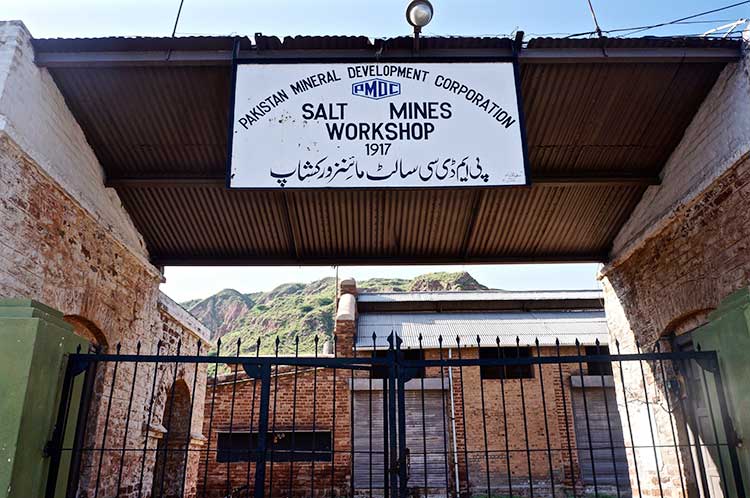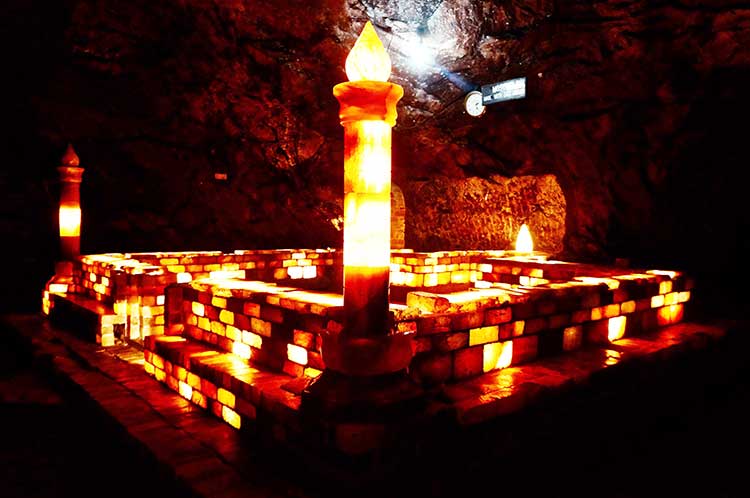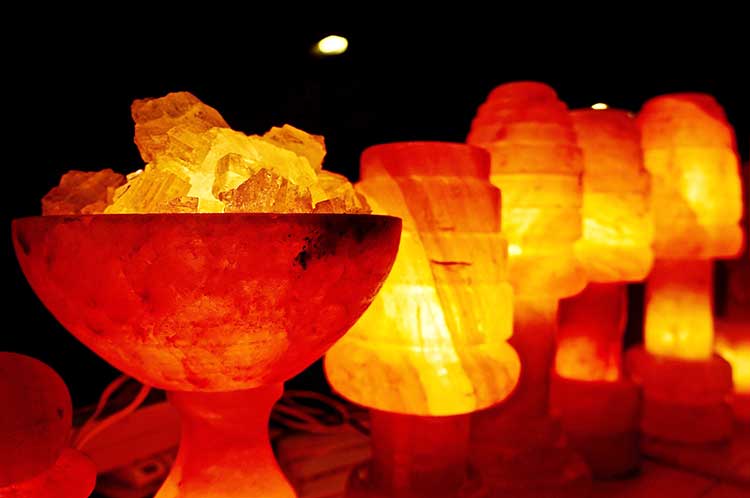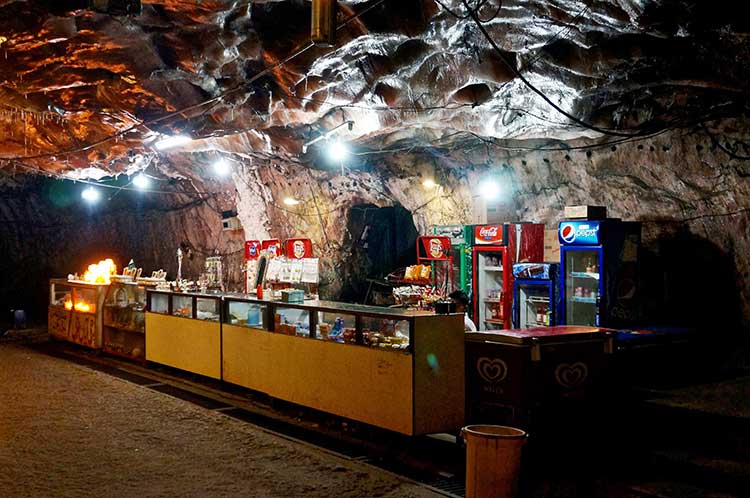The Magnificent Salt Range of Pakistan
- Geographical Significance of the Salt Range
- Rich Historical and Topographical Features
Notable Landmarks in the Salt Range
- Katas Raj Complex: A Place of Hindu Reverence
- Historic Forts and Shrines in the Region
- Wildlife Sanctuaries and Chinji National Park
- Serene Lakes Enhancing Tourist Appeal
Khewra Salt Mine: A World-renowned Gem
- Location and Accessibility of Khewra Salt Mine
- The Remarkable Scale of Khewra Salt Mine
- Popularity and Annual Tourist Footfall
Salt Production at Khewra Mine
- Impressive Annual Salt Production
- Preservation Measures to Prevent Cave-ins

Khewra has adequate tourist facilities. An electric train takes you to the inside of the mine, although you can always walk your way there if you want. Originally, the train was meant only for the transport of salt, but its function was altered to cater for growing tourism. As the train snakes inside the dark mine with artificial lights in place, the change in temperature is palpable. Even if it’s the sweltering Punjabi summer, the temperature of the mine is always maintained at a comfortable 18-20 degrees.
As you walk into the heart of the mine, the world assumes the form of salt, which is just about everywhere. There are numerous salt water ponds present, some of them allegedly centuries old. Various salt structures have also been erected in the mines. Most notable among these are the replica of the Minar-e-Pakistan, and the Salt Mosque (which the labourers have christened as their own ‘Badshahi Mosque’). Among the most interesting sights in the mine are the salt bridge that stands solid without any support whatsoever, the crystal gallery, and the carvings of verses and faces of the founders of Pakistan on the roof of a chamber. Also present in the mine is a wall that you’re supposed to lick – legend has it that this will get you a spouse of your liking. It’s rather amusing to see singles engage in this act!

The ‘Badshahi Mosque’ made of salt
There’s a lot more to Khewra than the salty sights and sounds of the mine. Khewra’s discovery is one of history’s romances as well. It was in 320 BC that the place was first discovered. As the battle between Alexander the Great and Raja Porus was imminent, the armies of the former established their camps here. Their horses were seen licking the rocks of the area gluttonously, which eventually led to the discovery of salt here. However, it was centuries later, during the Mughal era, that the mine was formally inaugurated. Since then, it has been functional, with various advancements done by the many regimes that followed.

Items made of salt being sold
A dispensary has been set up inside Khewra to cater to the immediate needs of tourists and labourers. An asthma clinic was also opened in 2007, where many respiratory diseases are treated through “salt therapy”. Other facilities are also in place. A souvenir shop sells various items made of salt, including lamps, bowls and replicas of famous buildings. There is even a cafe with a large seating area.

A cafe inside the mine
For all this and more, the Khewra Salt Mine is a must visit if you yearn either for a geographical marvel or a lesson in history. Despite the 2010 floods having adversely affected the mine, much has been restored. Run by the Pakistan Mineral Development Corporation (PMDC), the place is well worth a visit, and is sure to provide you with a memorable experience.
























